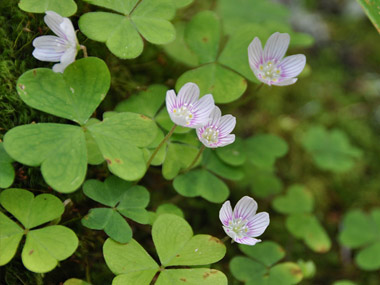Be Informed
Sign up for Sépaq emails to be the first to find out about our promotions, news and special offers.
Mountains, valleys, ridges and hills give Parc national du Mont-Mégantic a unique shape that holds an impressive natural environment. Nature lovers will be delighted by the vast variety of plant species, over 125 bird species and about 20 mammal species, including the moose and the white-tailed deer. An astronomy research centre, a nature interpretation centre and an observatory dedicated to the public make for a happy combination of earth and star activities. Whether you’d enjoy hiking, cross country skiing or snowshoeing, a supervised activity led by a nature interpreter or an astronomy interpreter, or an evening of star gazing Parc national du Mont-Mégantic invites you to come make some discoveries.
Click here to find out about the wide range of discovery activities available in the park!
Parc national du Mont-Mégantic has the potential to inspire wonder! And the best way is to participate in our discovery activities (in French only). Through the interpretation of natural and cultural heritage, you’ll learn more about the park and the importance of protecting it.
The park is home to the most powerful astronomy observatory in eastern North America, and is the heart of the first international Dark Sky Reserve! The stars are the celebrities, but not the only ones that will give your eyes a treat! Mountain peaks of over 1,000 m in altitude, an unusually shaped landscape, a hundred-year-old sanctuary and exceptional snow conditions make this area unique in southern Québec.
To guide us in developing our discovery activities, all the parks have an education plan.
During your time at the park, don’t miss a visit to the Discovery and Visitors Centre. See the exhibition, Pluto on Earth which presents many of the park’s natural treasures through interactive modules.
A mecca of astronomy in Québec, ASTROLab is just a few steps from the Discovery and Visitors Centre. It has 2 fascinating exhibitions, a multimedia room with a giant screen, a public observatory and a fleet of telescopes.
The vegetation of the Mont Mégantic massif is similar to that of the rest of the Eastern Townships. The Mont Mégantic massif is characterized by a layering of deciduous, mixed and coniferous forests. From 900 to 1,105 metres in altitude, the conifer forest is characterized by a boreal-type forest group named fir-oxalis montana. This forest environment is exceptional in Québec due to its rarity and its age. It is considered a rare forest because of the combination of a tree layer composed almost exclusively of balsam fir, and herbaceous flora mainly composed of oxalis montana (wood sorrel). This combination is only found on the high peaks of southern Québec. The more rugged climate at high altitudes and repetitive periods of destructive insect epidemics greatly influence the morphology of the fir trees. Near the summits, the trees are more stunted and there are many snags (dead trees still standing). Since this forest is at a high altitude and difficult to access and the stunted trees are of less commercial interest, some parts of the summits have never been commercially logged, hence the designation of old-growth forest. On the peaks of Mont Mégantic, Mont Saint-Joseph and Mont Victoria, 3.9 km² of forest have been identified as an exceptional forest ecosystem. Hikers can also discover this beautiful forest along Sentier de la promenade boréale trail, between Mont St-Joseph and Mont Victoria.

Sign up for Sépaq emails to be the first to find out about our promotions, news and special offers.